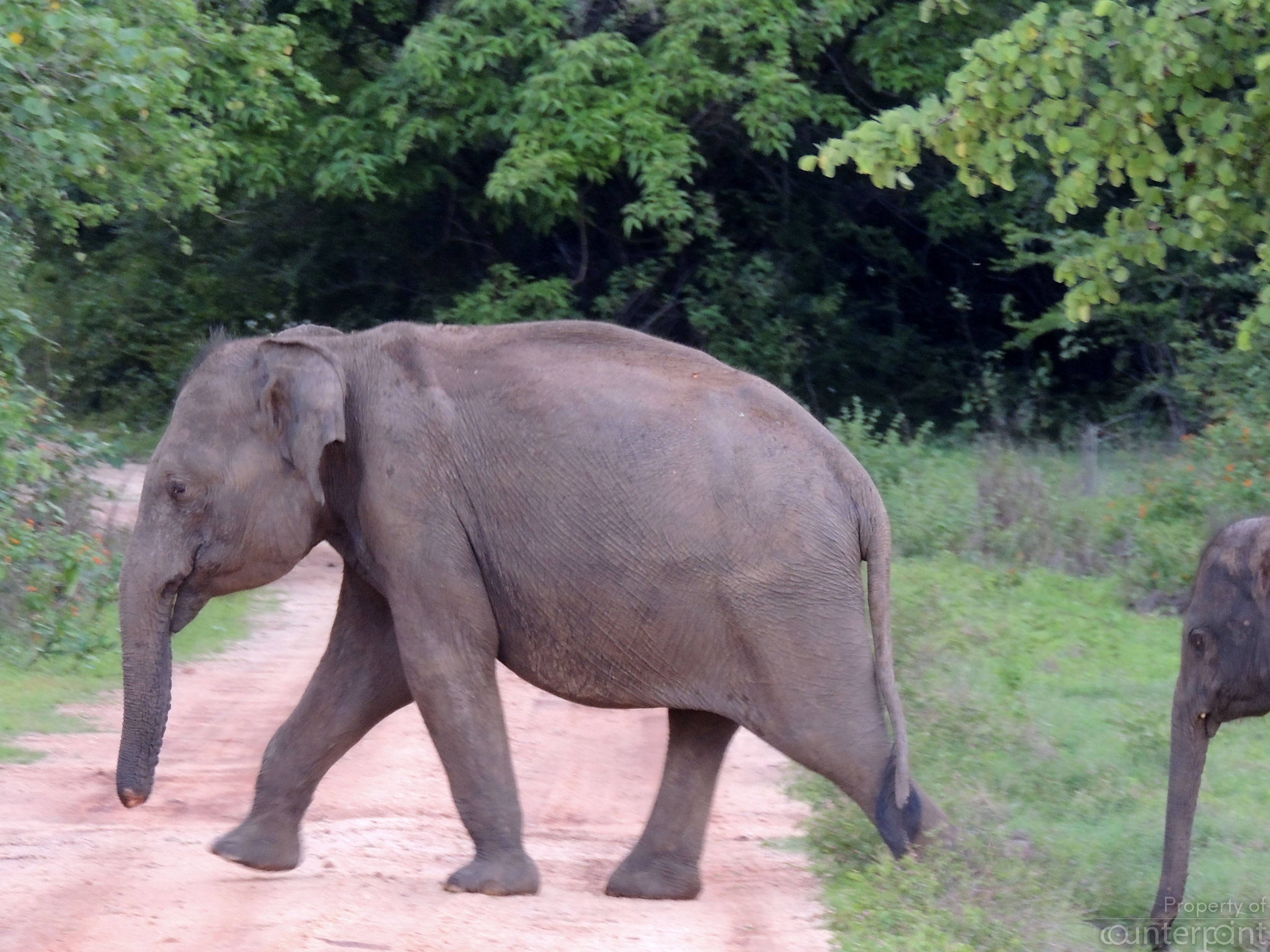Monitoring the health of free ranging wild animals is one of the toughest challenges for conservationists and wildlife managers. If the animal is a highly mobile animal like the elephant, then, it is near impossible. Unless the animal had been made immobile due to a debilitating wound or situation, to track an injured wild animal even with the slightest mobility is a daunting task.
By serendipitous events we have found that remote cameras could be an effective technology to monitor injured elephants. But the underlying challenges of finding the injured animal or animals and treating them still remains. Remote cameras have made it possible for us to identify injured elephants in Wasgamuwa and pass this information to the veterinarians of the Department of Wildlife Conservation.
Camera trapping is one of the most effective field research methods with potential for multiple field applications. Our remote camera trapping program was first initiated for the sole purpose of studying carnivores. As time went by, we realized that the camera traps are useful not only to study carnivores but also to gather information on elephants and various other fauna as well. The cameras are very effective in providing information on the health of elephants, especially to identify elephants that have been seriously wounded or injured or in poor overall physical condition.

In Wasgamuwa, one of the main threats to wild elephants is trap guns and steel wire snares. There is a very interesting reason for how and why this is so. Elephants are landscape architects similar to humans in many aspects. They are truly the only other species next to humans who can alter their environment very drastically. Elephants are the road makers of the wild—they are the bulldozers that create the main pathways in the forests and even in human-dominated landscapes. These paths made by elephants eventually become the main roads for practically all the other animals such as Sambhur, Axis deer, Wild Boar, Leopard, Sloth Bear and even smaller animals such as Civets, Mongooses, Mouse Deer and Fishing, Jungle and Rusty-spotted cats. Poachers use these paths as well to set their guns and traps and this is how elephants get injured by trap guns and snares.
Poaching is epidemic in Sri Lanka and Wasgamuwa is no exception. Steel snares and trap guns are frequently set along forest paths to kill game such as Sambhur, Axis deer, and Wild Boar. The height at which these guns are set depends on the chest height of the animal (for a lung or heart shot) the poachers are attempting to kill. So almost all of these guns are set up at 4 feet or lesser height with the lowest been for wild boar. Unfortunately elephants become collateral casualties of these traps.

Trap guns typically inflict wounds on the lower extremities of elephants’ generally on their limbs from the elbow and knee downwards unless a small calf triggers the gun. Then it could be lethal for the calf. If the home made slug goes into muscle then there is a good chance the wound will heal. But if the slug hits an artery or shatters bone then the elephant is definitely doomed. A fracture means a protracted death from infection and gangrene. Once an elephant breaks a major bone there is no chance of it ever healing. Elephants with shattered knees, ankles and wrists basically rot to their deaths, especially during the wet season, when they are highly susceptible to infection.
Steel snares again are set for game such as Sambhur, Axis Deer and Wild Boar and also to catch smaller game such as barking deer, mouse deer, pangolin and porcupine. These snares often get entangled in the feet and trunks of elephants. As it is for other animals, the snares are not life threatening to elephants. When elephants get entangled in snares they snap the cable from its anchor and drag the cable along or sometimes manage to break it off at the knot. We have encountered several elephants inside and outside the Wagamuwa National Park dragging cables that were attached to their legs. Although they are free the cables cause ligatures that eventually cuts into the flesh and becomes embedded in the bone, or in the case of a trunk it might get completely severed.
If these elephants are treated as soon they are encountered many of them can be easily saved before the snares cause mutilating injuries such as severed trunks and rupturing wounds in their limbs. When spotted, elephants with such injuries should be treated swiftly to ensure they will not suffer unnecessarily. However, the challenge is the lack of field veterinary facilities to mobilize immediately when such elephants are encountered. So, tragically, most of these elephants go untreated. For some with grievous injuries by the time an effort is made to treat them it is too late considering the tremendous challenge of finding them first.
The Sri Lanka Wildlife Conservation Society has set up remote cameras along several major elephant paths to identify and monitor elephants injured from trap guns and snares. The information so gathered is passed on immediately to the veterinarians of the Department of Wildlife Conservation. Due to these efforts the wildlife department veterinarians have been able to treat vey effectively several of these injured elephants in Wasgamuwa.





